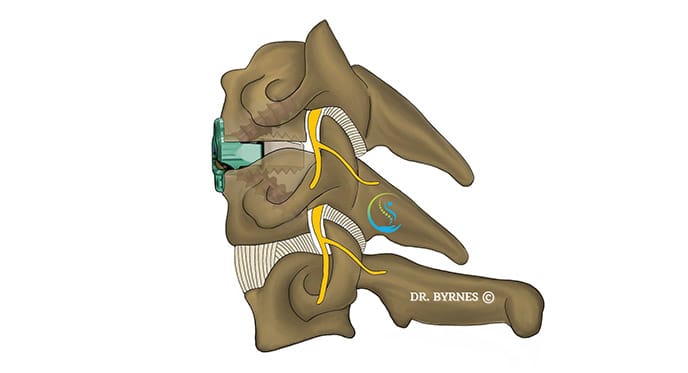
Cervical discectomy and fixation is a surgical procedure that removes a damaged intervertebral disc and stabilises the adjacent vertebrae, relieving pressure on spinal nerves and improving spinal stability.
This article will discuss the indications, techniques, benefits, potential risks, various interbody cage and graft options, patient experience, and postoperative care for this procedure.
Cervical discectomy and fixation may be indicated for patients experiencing neck pain, radiculopathy (nerve root compression), or myelopathy (spinal cord compression) due to degenerative disc disease, herniated discs, spinal stenosis, or cervical spondylosis.
This procedure is typically recommended when conservative treatments, such as medication, physical therapy, or epidural steroid injections, have failed to provide adequate relief.
The procedure is performed under general anaesthesia, and the patient is positioned supine on the operating table. The main steps of cervical discectomy and fixation include:
Several types of interbody cages and graft materials are available for cervical discectomy and fixation:
As with any surgical procedure, cervical discectomy and fixation carries potential risks, including Infection, Bleeding, Nerve injury, Graft failure or non-union, and Adjacent segment degeneration.
Patients can expect to experience some pain and discomfort following the procedure, which can be managed with pain medications.
Most patients are encouraged to begin walking and participate in gentle activities within a day or two after surgery. A neck brace may be recommended for a short period to provide support and limit motion.
Physical therapy is often prescribed to help patients regain strength, flexibility, and range of motion. Patients are advised to avoid heavy lifting and strenuous activities for several weeks.
It is important to follow the surgeon's specific postoperative instructions and attend all scheduled follow-up appointments to monitor the healing process and ensure successful fusion.
Cervical discectomy and fixation has evolved as a safe and effective treatment option for patients suffering from various cervical spine conditions. The procedure offers significant benefits, including reduced neurological symptoms, improved spinal stability and the potential for effective neck pain relief.
With the advancement in interbody cage and graft options, fusion success rates have further increased.
